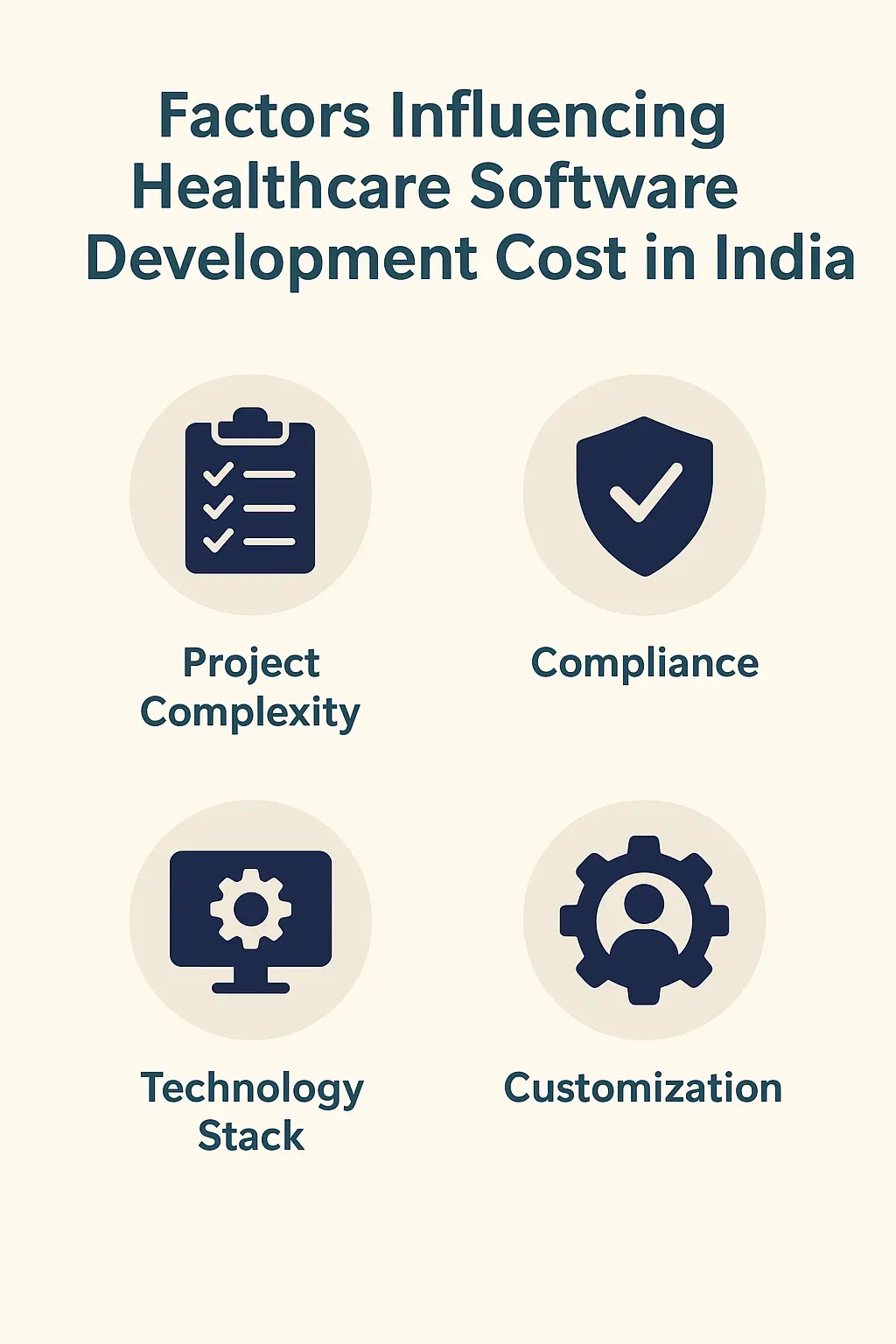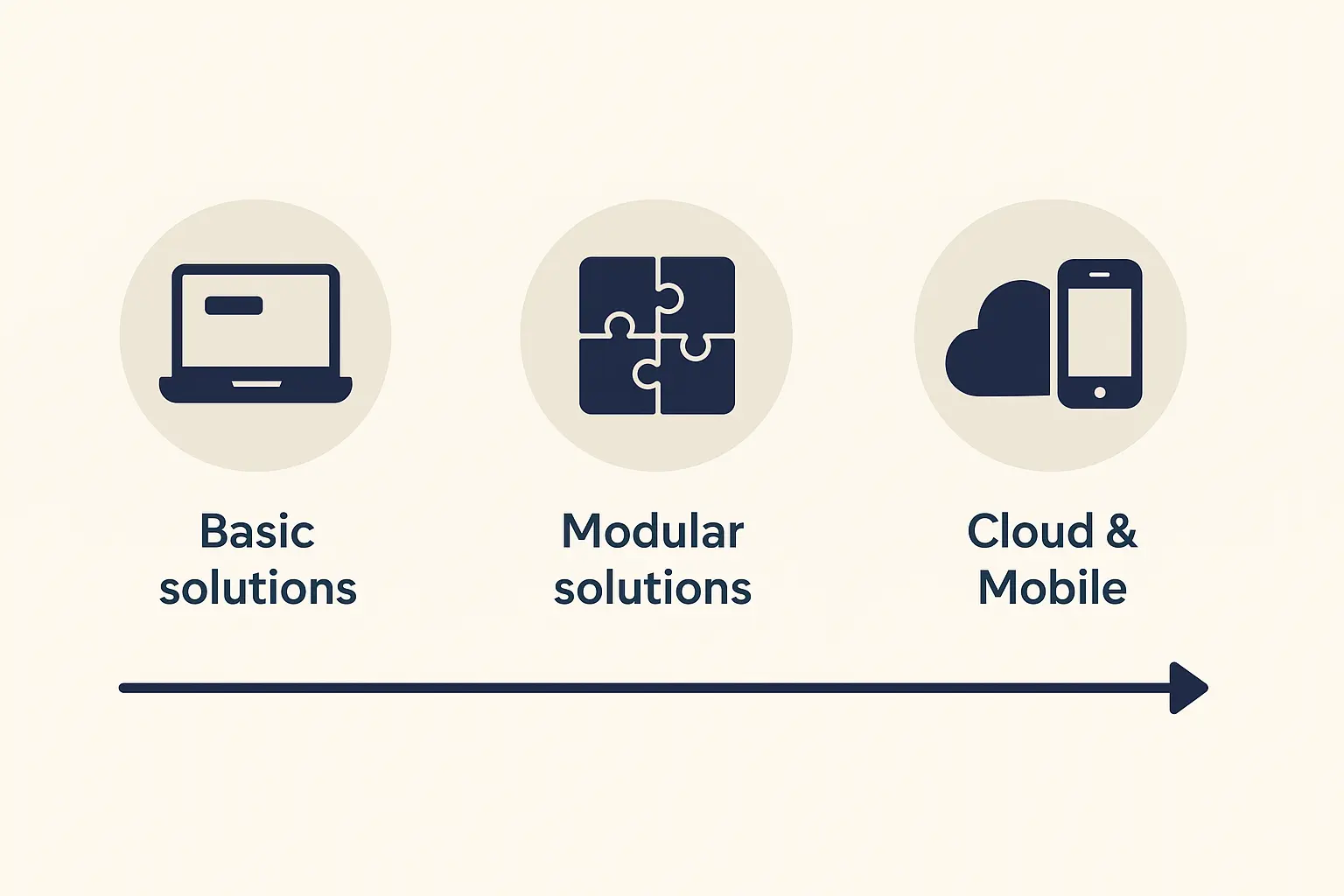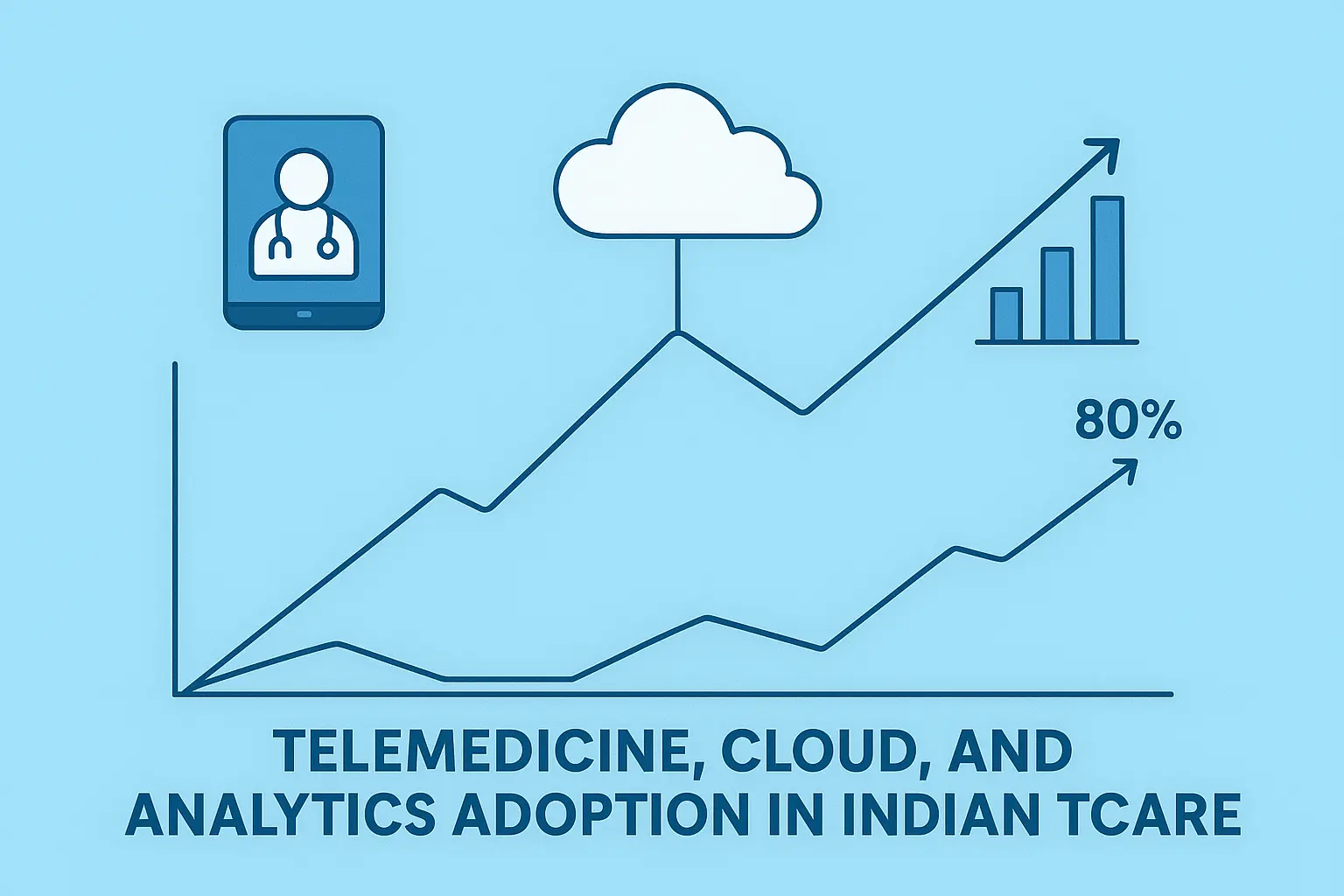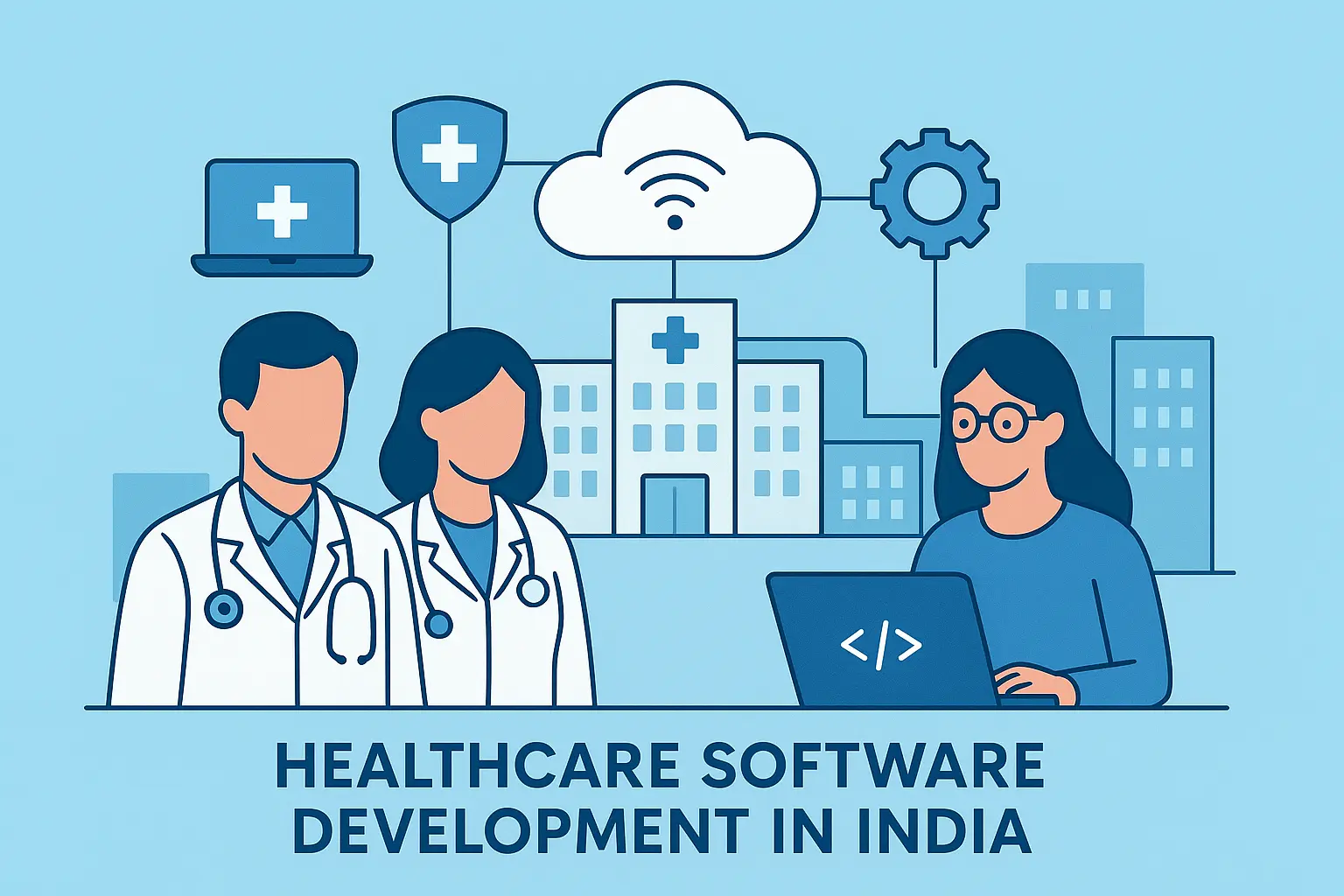Table Of Contents
Factors Influencing Healthcare Software Development Cost in India
Breakdown of Development Stages and Cost Ranges
Data and Statistics Analysis
Tools and Templates for Budget Estimation
Cost Optimization Strategies
Expert Recommendations for Healthcare Software Projects
Additional Considerations
Final Budgeting Roadmap
Conclusion
Frequently Asked Questions (FAQs)
Key Takeaways
Understanding the costs of healthcare software development is crucial for effective budgeting, as prices can start from modest amounts and vary widely based on features and complexity.
Modular solutions offer flexibility by breaking down projects into smaller parts, making it easier to comply with local regulations and adapt to changing needs.
Compliance with local healthcare regulations and data protection laws is vital for avoiding potential legal issues and ensuring patient trust.
Recent stats highlight the growing demand for customized healthcare software in India, showcasing significant opportunities for businesses willing to innovate and invest.
Tridev Technologies specializes in delivering custom software, mobile apps, and cloud solutions tailored for startups, SMBs, and large enterprises. Our expert development team can help boost your business with the right technology solutions.
Factors Influencing Healthcare Software Development Cost in India
India’s healthcare software market is experiencing a steady increase in demand, driven by digitization initiatives and the need for robust digital health solutions. Various factors that determine the overall cost include project complexity, technology requirements, compliance with local regulations, and integration with existing systems. Cost considerations are also influenced by the level of customization, the need for mobile applications, and cloud-based solutions. Developers must account for insurance, patient data security, and interoperability with national health initiatives, making this field both challenging and promising.

Key Cost Determinants
Project Complexity: More complex projects require robust architecture, increased development time, and larger teams.
Customization Level: Fully custom solutions often cost more than off-the-shelf products. Basic solutions may start from a lower range, while comprehensive systems with advanced modules will require higher budgets.
Technology Stack: The choice between native and cross-platform development affects cost. Cloud-enabled solutions add an extra layer of recurring expenses.
Compliance and Safety Requirements: Adhering to healthcare norms, local data protection laws, and safety regulations increases development time and testing cycles.
Integration Needs: Compatibility with existing systems, such as hospital databases and electronic health records (EHR), impacts overall expenditures.
Market Trends for 2025
The current market trends forecast an upward trajectory for healthcare software development investments in India. Key trends include:
Growing adoption of telemedicine and remote patient monitoring systems.
Increased focus on cloud migration and data analytics.
Rising emphasis on compliance with local standards, driven by government initiatives and data privacy concerns.
Modular approach where healthcare providers opt for scalable solutions which allow them to gradually add functionalities based on needs.
Data from sources like Statista Healthcare, Ministry of Health and Family Welfare, and WHO confirm that investments in digital health solutions have increased significantly. Government bodies are encouraging the integration of emerging technologies into healthcare systems to achieve greater efficiencies and cost savings.
Breakdown of Development Stages and Cost Ranges
A healthcare software project typically unfolds through multiple stages, each with its own expected costs. Understanding these stages helps in accurately budgeting the overall project. The stages are discussed below with indicative cost ranges, which may start from lower base figures and increase with additional functionalities.

Stage 1: Basic Solutions
Basic solutions involve developing essential functionalities required for smaller healthcare providers or startups. These projects primarily focus on patient data management, appointment scheduling, and basic EHR capabilities.
Cost Factors for Basic Solutions
Initial Consultation: The discussion phase that outlines requirements generally has minimal associated costs.
Prototype Development: A simple prototype designed to demonstrate core functionalities. This is crucial for early testing and stakeholder feedback.
Core Module Implementation: Developing modules for patient records, simple interface designs, and security features.
Testing & Deployment: Essential testing to ensure the system meets healthcare compliance standards, followed by deployment on local servers or cloud-based environments.
Indicative budget ranges for basic solutions typically start from a lower base, catering especially to startups or clinics with limited budgets. The cost, starting from a basic level, is primarily dependent on the extent of customization and integration required.
Stage 2: Modular Solutions
As healthcare providers scale, they require systems that are both robust and flexible. Modular solutions allow institutions to start with a core system and slowly integrate advanced modules as their needs grow. This structure helps control upfront costs and facilitates future enhancements.
Benefits of Modular Solutions
Scalability: Institutions can begin with core functionalities and later add specialized modules for lab management, telemedicine, and advanced imaging.
Risk Reduction: Gradually adding features reduces the risk of budget overruns and helps maintain system stability.
Tailored Implementation: Modules can be designed and deployed based on immediate requirements, which allows a smooth transition over multiple development phases.
🚀 Transform Your Healthcare Idea into a Secure App – Get 15% Off!
Partner with Tridev Technologies to build HIPAA-compliant, scalable healthcare apps. Limited-time offer for startups and clinics – grab 15% OFF on your first project consultation!
A modular solution may include:
Core EHR Module: Foundation for all patient data.
Appointment and Scheduling Module: Integration with calendars and notification systems.
Analytics and Reporting Module: Enables data collection and analysis to enhance decision-making.
Telemedicine Integration: Facilitates remote consultations and patient care services.
Patient Portal Module: Enhances the patient experience with access to test results, appointment history, and more.
By planning with modular solutions, healthcare institutions can manage costs more effectively. For professionals considering detailed cost structures, it might be useful to review other guides such as Healthcare Software & EHR Budget Planning Guide for Indian Hospitals.
Stage 3: Advanced Cloud and Mobile Integration
With an ever-increasing reliance on cloud-based infrastructure and mobile applications, many healthcare providers are upgrading their systems to incorporate these elements. Cloud solutions provide better accessibility and scalability, while mobile apps make services more user-friendly and accessible.
Cloud Integration and Mobile App Considerations
Cloud Integration: Migrating systems to the cloud ensures data is backed up, accessible, and scalable according to demand. This reduces the need for expensive on-premises hardware and improves disaster recovery capabilities.
Mobile Applications: The development of mobile interfaces for both patients and healthcare professionals enhances the overall user experience. Mobile applications can monitor patient health, provide appointment reminders, and improve communication between stakeholders.
The development costs for cloud and mobile solution upgrades usually start from a higher price bracket. However, the long-term benefits include improved accessibility, continuity, and overall system performance. A focused cost breakdown for such enhancements emphasizes:
Cloud Migration: Costs include platform fees, security enhancements, and performance optimization.
Mobile App Development: Encompasses both iOS and Android platforms, user interface design, and back-end integration.
Maintenance: Recurrent technical support and software updates necessary to keep pace with evolving security and compliance standards.
For a deeper look into the cost elements related to mobile app development, please explore the detailed guide Cost Of Developing A Custom Mobile App - Your Complete Guide.
Stage 4: Ensuring Compliance with Local Regulations and Safety Standards
Healthcare software development in India must align meticulously with local regulations set by various authorities. Compliance is essential not only to secure patient data but also to ensure that the systems meet national safety standards.
Compliance Checklist
Data Privacy and Security: Ensure all patient data is encrypted. Compliance with the Information Technology Act and local regulations is mandatory.
Integration with National Health Policies: Systems should be designed to work within frameworks outlined by the Ministry of Health and Family Welfare.
Validation with Standards: Follow standards recommended by bodies like the WHO and local healthcare committees.
Regular Audits: Periodic assessments help in maintaining compliance with evolving legal and policy changes.
This compliance phase usually adds a layer of cost to the overall development budget, as additional testing, audits, and certifications must be considered throughout the project cycle.
Comparative Table: Cost Breakdown by Development Stage
Development Stage | Key Components | Cost Range (Indicative) |
Basic Solutions | Core data management, prototype, EHR module, testing | Starting from entry-level budgets |
Modular Solutions | Core EHR, telemedicine module, scheduling, patient portal | Mid-tier, scalable per module |
Advanced Cloud and Mobile | Cloud migration, mobile app development, maintenance | Higher bracket with recurring fees |
Compliance & Safety | Security features, audits, certifications | Additional cost on each stage |
The table above provides an approximate breakdown of the stages in healthcare software development. Specific figures will vary based on project scope, technology stacks used, and the chosen vendor’s expertise.
Data and Statistics Analysis
Using verified data sources such as the Indian Council of Medical Research (ICMR), Ministry of Health and Family Welfare, Statista Healthcare, and WHO, a detailed analysis helps validate the cost estimates and market trends.
Key Statistical Insights
ICMR Reports: Demonstrate increased investment in digital health; research projects affirm that digitization significantly improves patient outcomes.
Ministry of Health and Family Welfare: Public health initiatives underline the priority of digital transformation, encouraging healthcare IT budgets to rise in alignment with national projects.
Statista Healthcare: Analytical data from Statista shows a trend of steady year-on-year increases in expenditure for healthcare IT projects in India.
WHO Guidelines: WHO recommendations on digital health emphasize secure, compliant, and scalable systems, which push developers to adhere closely to international standards.
Step-by-step, the approach for using these data sources in your cost estimation involves:
Gathering relevant reports from each source.
Analyzing current trends in healthcare IT spending.
Comparing local initiatives with global standards.
Adjusting the cost structure according to the specific needs of the project based on modular components and compliance requirements.
Using these insights ensures that the final software system is not only cost-efficient but aligns with both operational needs and regulatory mandates.
Tools and Templates for Budget Estimation
Healthcare providers and IT managers can benefit from using specific tools and templates to manage and estimate budgets efficiently. Here’s a step-by-step guide on how to approach budget estimation:

Step-by-Step Budget Planning
Identify Core Requirements: List the key modules needed, such as EHR, appointment scheduling, and compliance modules.
Assess Current Systems: Evaluate existing infrastructure to determine integration or replacement needs.
Define Module Priorities: Determine which modules are essential for immediate deployment and which can be phased in later.
Cost Estimation per Module: Use templates that break down the cost per module. This ensures that all aspects—from development to compliance—are covered.
Incorporate Maintenance and Upgrades: Budget for ongoing support, regular upgrades, and potential cloud service fees.
Review Regulatory Costs: Include additional costs required for certifications, audits, and compliance checks.
Useful Templates
Project Budget Solver: A spreadsheet template that details cost items and provides automatic summing of total costs. This is particularly useful for tracking phased investments.
Risk Assessment and Mitigation Plan: A template focused on identifying potential risks within the project and budgeting contingency funds.
Timeline and Milestone Tracker: Helps in aligning budget allocations with project milestones, ensuring timely resource allocation in every stage of development.
These tools can be customized easily to match specific project needs and help maintain transparency throughout the budgeting process.
Cost Optimization Strategies
Keeping development within budget while ensuring robust functionality is paramount. Here are some strategies:
Prioritize Essential Features: Start with modules that are absolutely necessary, then add on functionality in later phases.
Leverage Cloud Infrastructure: Reduce upfront hardware investments by opting for cloud-based solutions which offer pay-as-you-go models.
Adopt Agile Development: Agile methodologies allow for iterative releases and give the project flexibility to scale gradually.
Negotiate with Vendors: Engage with vendors who specialize in healthcare software development in India to explore cost-effective packages that include maintenance and compliance assurance.
Utilize Open Source Tools: Where possible, incorporate open source solutions that can reduce licensing fees without compromising on quality.
For healthcare providers and IT decision-makers looking to embark on a digital transformation journey, a detailed understanding of software development costs is crucial. Professionals are encouraged to:
Use prepared templates and tools to begin a detailed budget estimation.
Consult with specialized development teams, such as those at Healthcare Software Solutions | Tridev Technologies, to gain insights tailored to your specific needs.
Schedule a consultation to discuss modular implementations and compliance strategies tailored to the evolving regulatory environment.
The approach not only simplifies cost estimation but also helps formulate a realistic roadmap that evolves with your institutional needs. By planning carefully at each stage, healthcare providers can mitigate risks while adopting cutting-edge technology in a cost-effective manner. Exploring detailed planning guides, such as the Healthcare Software & EHR Budget Planning Guide for Indian Hospitals, can further streamline this process.
Expert Recommendations for Healthcare Software Projects
Given the rapid evolution of healthcare technologies, ongoing re-assessment of software development strategies is critical. Experts suggest:
Continuous Learning: Stay updated with data trends from reputable sources like WHO and Statista Healthcare, which provide evolving insights into global and local market trends.
Investment in Training: Both IT teams and healthcare professionals should be trained to handle new technologies, ensuring optimal use of the developed tools.
Periodic System Evaluations: Cycle through regular assessments to ensure that all modules remain compliant with emerging safety standards and technological advancements.
Collaboration: Encourage collaboration between technical teams and frontline healthcare providers to ensure that systems remain intuitive and practically useful.
By maintaining a dynamic approach to cost management, providers can ensure that their healthcare software projects remain competitive and responsive to market demands.
Additional Considerations
During the planning and execution phases, it is important to account for:
Security Enhancements: Protecting patient data is paramount. Investments in encryption, secure user authentication, and regular vulnerability assessments are critical.
User Experience (UX): A well-designed interface reduces the need for extensive training and improves adoption across staff and patients.
Integration with Existing Systems: Ensure the new modules work seamlessly with legacy systems to prevent additional costs related to data migration.
Regulatory Changes: Stay aware of incremental changes in local healthcare policies that might impact cost projections or require system upgrades.
By addressing these considerations, healthcare institutions can save costs over the long term while ensuring the continuity and quality of care.
Final Budgeting Roadmap
Creating a detailed roadmap helps in managing development phases and allocating budgets effectively. Here is an outline that can be adapted:
Phase 1: Core system design (basic EHR, appointment scheduling) Action: Identify and document key modules, draft initial prototypes, and establish a baseline budget.
Phase 2: Implementation of modular add-ons (telemedicine, analytics) Action: Evaluate patient data flow and performance, then plan for subsequent rollouts.
Phase 3: Cloud migration and mobile app integration Action: Initiate cloud migration with vendor consultations and assess mobile app requirements.
Phase 4: Compliance enhancement and security audits Action: Engage third-party consultants for regulatory compliance and invest in ongoing user training.
This phased roadmap provides a clear direction for executing complex healthcare software projects without overburdening the initial cost structure.
By using these insights and tools, healthcare providers in India are better positioned to plan for 2025 and beyond, ensuring that their software systems are robust, compliant, and scalable as the country’s healthcare ecosystem continues to rapidly evolve.
Conclusion
This article recaps key insights on healthcare software development cost in India. We discussed the importance of modular solutions, adhering to local regulations, and planning budgets wisely. These learnings show how vital it is to balance innovation and compliance. Check out the expertise of Custom Software Development | Tridev Technologies and boost your business with Tridev Technologies expert development team by taking actionable next steps today.
